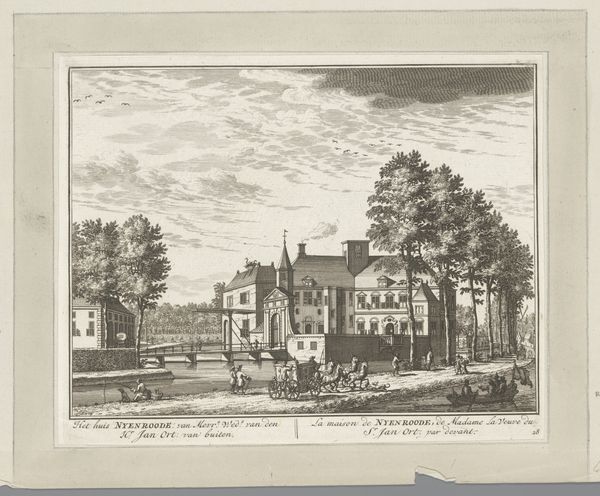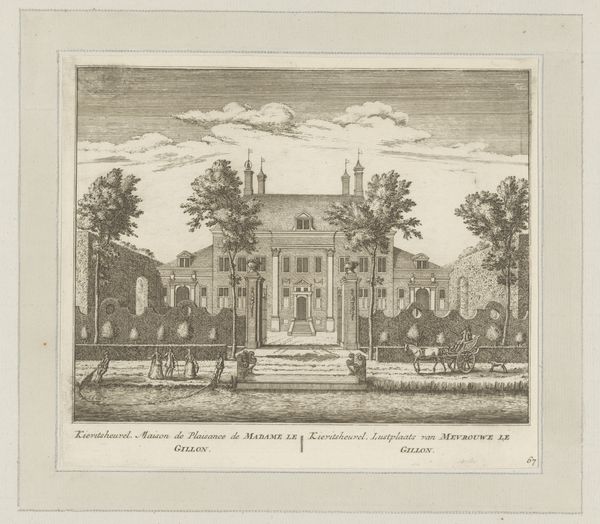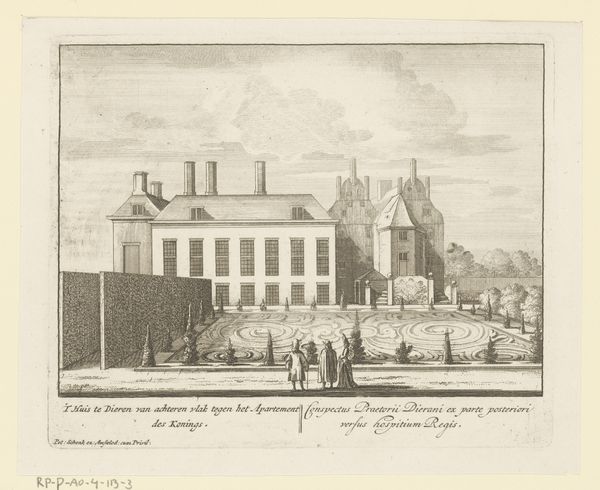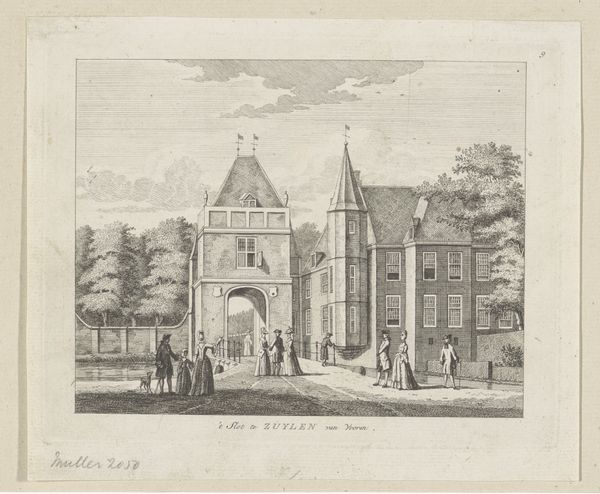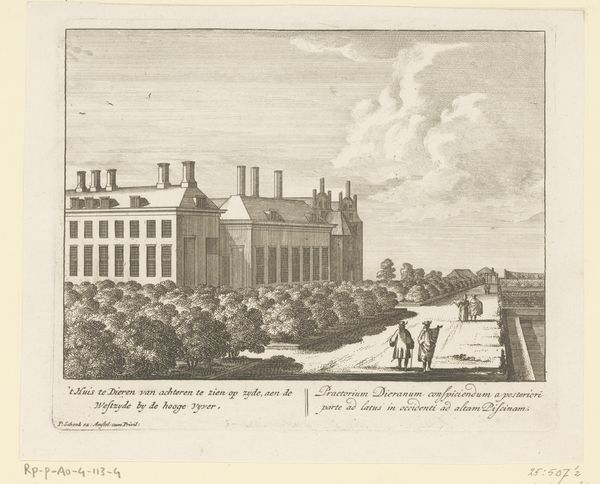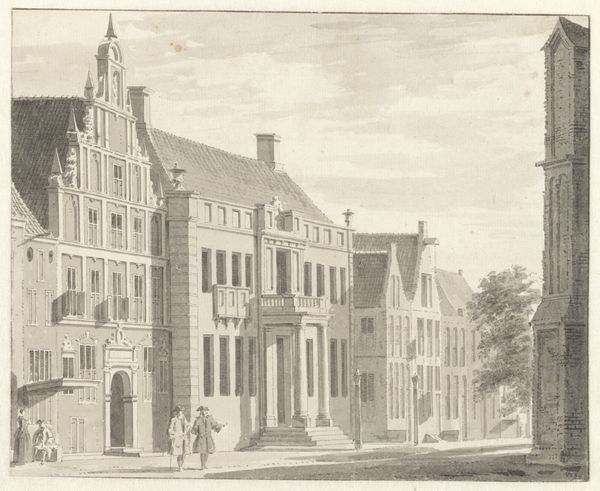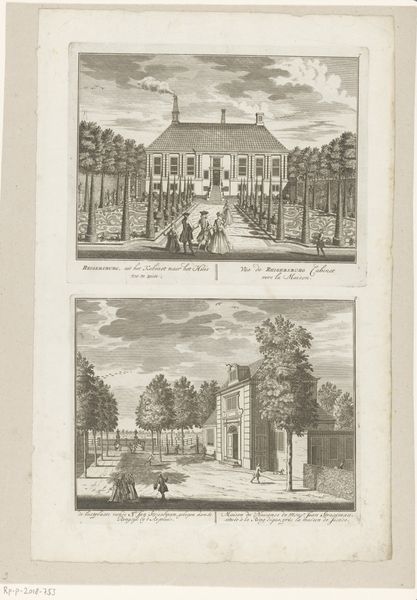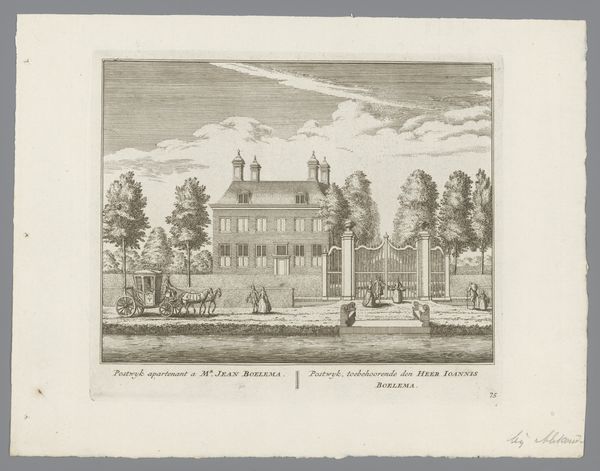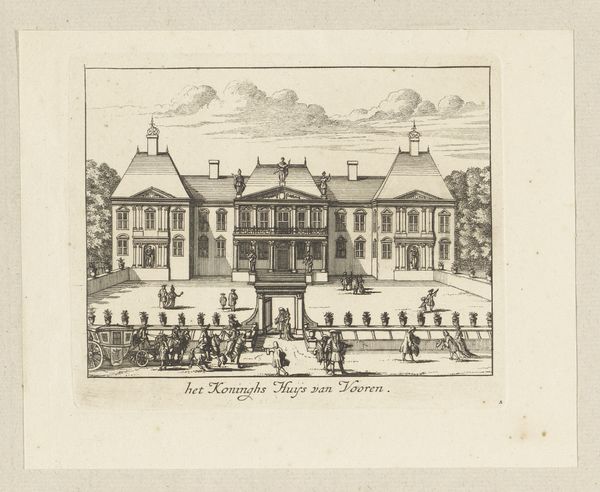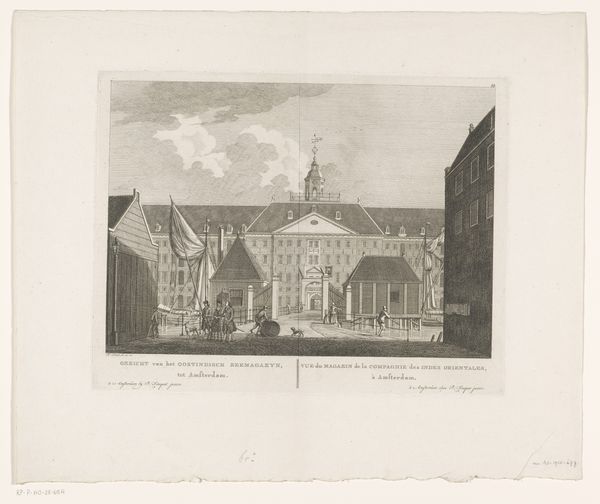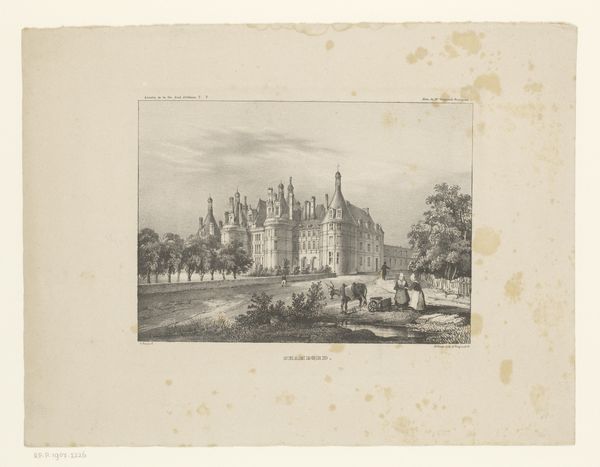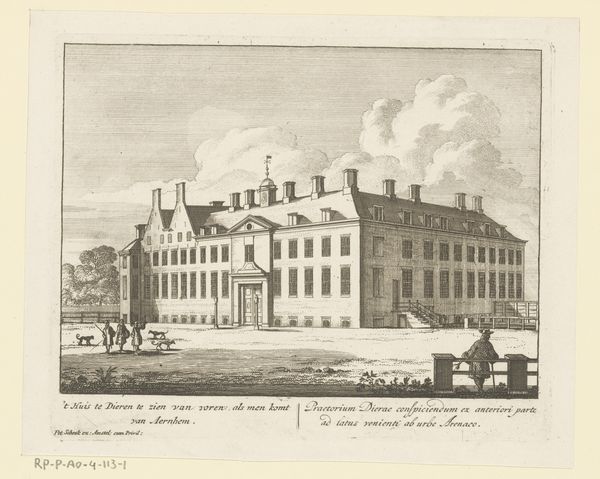
print, engraving, architecture
#
baroque
# print
#
landscape
#
cityscape
#
engraving
#
architecture
Dimensions: height 169 mm, width 212 mm
Copyright: Rijks Museum: Open Domain
Editor: Here we have Hendrik Spilman's engraving, "Gezicht op het Bisschops hof te Utrecht," created around 1758. The scene is so meticulously rendered, it almost feels like a photograph. What historical or social dynamics were at play that might shed light on this piece? Curator: Indeed. Spilman's choice to depict the Bisschopshof through the clean, almost sterile lines of engraving is telling. While seemingly objective, it idealizes power, presenting an ordered and controlled image of the Dutch elite in their urban environment. The very act of meticulously documenting this architecture signifies an attempt to legitimize and preserve a particular social structure, erasing perhaps the less palatable aspects of Utrecht's societal hierarchies. Consider the labour required to maintain such grandeur, deliberately omitted from the image. Editor: So, this isn’t just a cityscape; it’s a statement? A carefully curated performance, maybe? Curator: Precisely! Consider the composition: the building dominates, dwarfing the figures. Who is included, and who is notably absent? We see burghers, carriages… But where are the working-class individuals who would have been vital to the city's function and the court's wealth? Whose narratives are being silenced in this seemingly objective depiction? The act of printing itself becomes a means of dissemination, perpetuating specific perspectives, particularly regarding those in positions of authority and power. What do you make of the level of detail? Editor: The level of detail almost feels like an attempt to remove subjectivity, like it’s supposed to be purely factual. But you're saying even that supposed objectivity is a choice. Curator: Exactly! This engraving is less about architectural representation and more about asserting dominance and solidifying a particular vision of Utrecht, both for its inhabitants and for posterity. Remember, even the most realistic representation is still a representation, laden with intentional and unintentional biases. What resonates most with you? Editor: I'll never look at an old cityscape the same way again. The untold stories are sometimes more powerful than what’s visible on the surface. Curator: A keen observation! Art serves as a conduit into broader historical, political and societal circumstances; critical interpretation allows us to unravel their implications in today’s world.
Comments
No comments
Be the first to comment and join the conversation on the ultimate creative platform.
